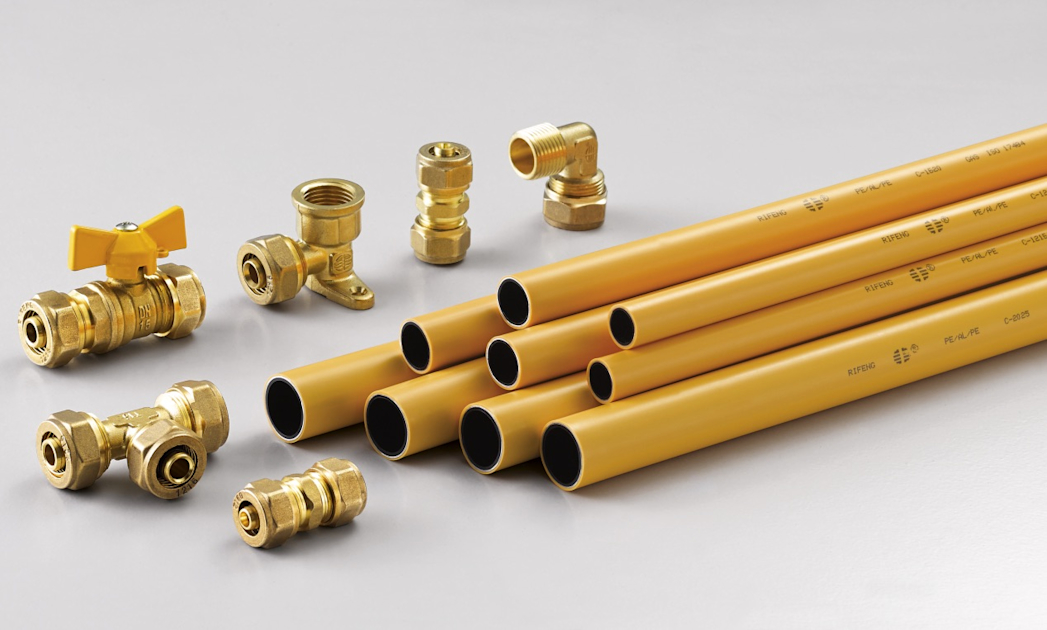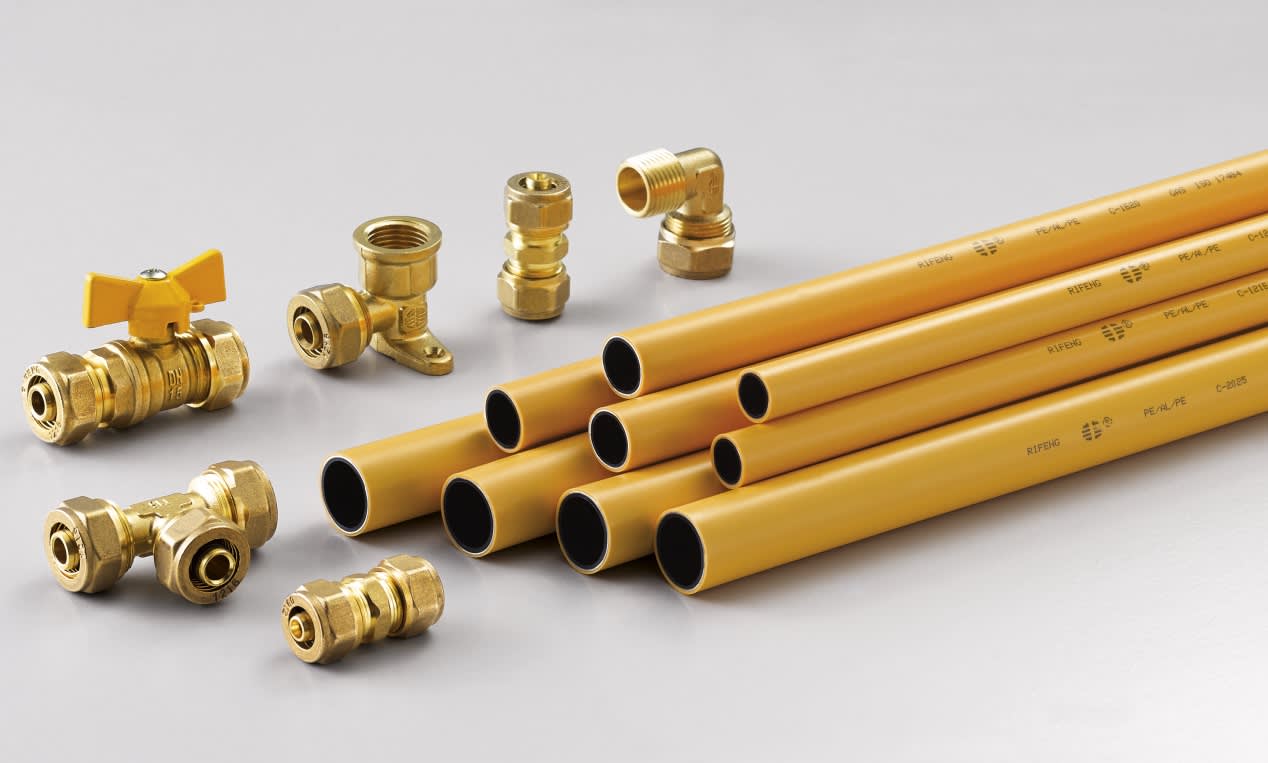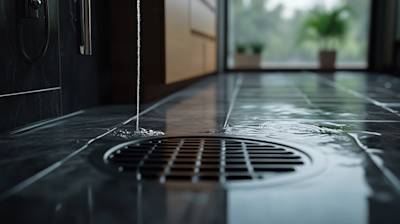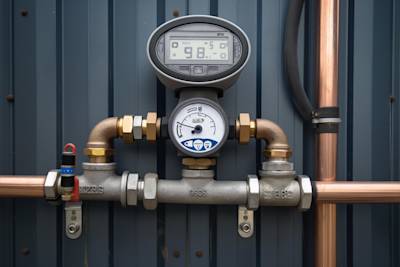Within the broad-based arena of mechanical fittings and pipeline assembly, one domain which commands utmost importance is the aspect of gas pipeline installation. With essential safety measures necessitating adherence to global standards, one can't emphasize enough the paramount significance of choosing the correct gas pipe size. Hence, today we bring you the definitive guide on gas pipe sizing charts, where you will learn everything from the basic understanding, need, applications, to the correct interpretation of gas pipe sizing charts.
Understanding Gas Pipe Sizing Charts
A gas pipe sizing chart is a critical tool used in establishing the ideal size of pipes needed for safe and efficient gas supply installations. These charts aid in determining the correct diameter of the pipes for the specific flow rate and available pressure of the natural gas or LP gas in use. Realizing the imperative requirement of gas pipe sizing charts is fundamental to ensuring seamless gas flow and heightened safety in residential, commercial, or industrial setups.
Importance of Proper Pipe Sizing
Gas pipeline dimensions are not arbitrarily chosen. Selecting an unsuitable pipe-size for a particular application can lead to varied consequences, from lower efficiency and reduced flow rate to risks of catastrophic results due to pressure build-ups. Smaller diameter pipes may result in increased pressure drop and insufficient gas supplied to appliances, while larger pipe diameters may lead to unnecessary cost incurred.
Elements of a Gas Pipe Sizing Chart
A typical gas pipe sizing chart comprises a set of columns and rows that depict diverse values. The chief elements include the length of the pipe, the flow rate (measured in thousands of BTUs per hour), and specific pipe diameters. By appropriately matching these variables, you can deduce the exact gas pipe size needed for the installation.
How to Use a Gas Pipe Sizing Chart
Using a gas pipe sizing chart may seem daunting initially, yet it's relatively straightforward once you understand their details. Here's a step-by-step guide:
- Determine the gas type: Different gases like natural gas and propane (LP) have various energy outputs; thus, they require different pipe sizes.
- Identify required gas flow rate: The total energy output (BTU/hr) of all the gas appliances that will be connected to the gas pipe will give you the required gas flow rate.
- Measure total pipe length: From the gas meter or LP tank to the farthest appliance, measure the total distance.
- Refer to the chart: Using the total gas flow rate and the total pipe length, inspect the appropriate row and column; where they intersect, you'll find the minimum pipe diameter your installation requires.
Once you've determined the ideal pipe size, you'll be in an excellent position to proceed with the installation, knowing that safety and efficiency have thoroughly been addressed.
Adherence to Codes and Standards
Every gas pipe sizing chart should comply with globally accepted codes and standards, such as those outlined by the International Fuel Gas Code (IFGC) or the National Fuel Gas Code (NFPA 54). These codes define the exact methods and guidelines for determining the suitable pipe size for every gas installation.
Ensuring adherence to these codes and standards contributes massively towards a safe and efficient gas supply system. They ensure best practices are followed, promote systematic installations, enhance safety, and play a significant role in curbing accidents due to the incorrect installation of gas pipelines.
Understanding the significance of gas pipe sizing charts is crucial, not merely for those working in the gas industry, but for anyone considering installing gas appliances in their homes or businesses. Proper pipe sizing, as dictated by these charts, ensures seamless gas supply, optimized gas appliance usage, and most importantly, safety of the occupants.
Whether you are a professional plumber or a DIY enthusiast, knowledge of gas pipe sizing charts is invaluable and essential for ensuring the efficiency and safety of the systems you work on. The wisdom shared in this ultimate guide to gas pipe sizing charts will definitely serve as a helpful starting point in your journey to understand the intricacies of gas pipeline installations.
FAQ's About Gas Pipe Sizing Charts
What is a gas pipe sizing chart?
A gas pipe sizing chart is a valuable tool used for determining the appropriate size for gas pipelines. This chart essentially takes into account several factors such as the gas flow rates, pipe length, and the number of appliances to be served. It ensures that the gas supply is distributed evenly and efficiently to all connected appliances, while maintaining appropriate line pressure.
How do I use a gas pipe sizing chart?
To use a gas pipe sizing chart, you must first figure out the total gas demand in British Thermal Units (BTUs) or cubic feet per hour (CFH) of the appliances which the gas line would serve. Next, determine the distance (in feet) from the gas meter or propane tank to the most distant appliance. This gives you the necessary inputs to enter into the chart and identify the correct pipe size required for your gas installation.
Where can I find a gas pipe sizing chart?
Gas pipe sizing charts can be found in multiple places, such as plumbing and gas pipe installation manuals, online resources like manufacturer websites, or in dedicated plumbing apps. Note that different jurisdictions may have different regulations or standards of referencing, so it is crucial to source charts applicable to your locality.
Why is it important to choose the correct gas pipe size?
The right gas pipe size has several implications: It ensures a sufficient and efficient distribution of gas, thereby preventing wastage. Moreover, it improves the performance of appliances by maintaining adequate pressure, reducing risks of malfunction or damage. Most importantly, proper pipe sizing enhances safety by preventing excessive pressure build-up that might lead to hazardous situations like gas leaks.
Is there a different gas pipe sizing chart for different types of gas?
Yes, different types of gas like natural gas or propane have their own unique gas pipe sizing charts. They also have different requirements due to the disparities in their energy content and pressure levels, necessitating different chart references.
What are the challenges associated with gas pipe sizing?
Gas pipe sizing can present challenges such as correct interpretation of the gas pipe sizing chart, appropriate account of pressure drop over distance, and consideration for future needs or changes. This is where an experienced professional can provide guidance, reducing risks of errors or miscalculations.
Are there software or online tools that assist in pipe sizing?
Yes, there are numerous software tools and online calculators available that can help you in pipe sizing. These tools typically require key information like gas type, pressure, flow rate, and pipe length to provide appropriate size calculation. However, these tools should complement rather than substitute professional advice, especially for complex installations.
What precautions should be taken while using a gas pipe sizing chart?
While using a gas pipe sizing chart, it is important to ensure that all factors are considered accurately. All measurements should be precise, and the chart used should be based on the updated standards. Since inaccurate pipe sizing could lead to serious safety implications, it is recommended that a certified professional should verify the process.
Does the material of the pipe affect the pipe size?
Yes, the material of the pipe can impact the size required. Different materials can have differing internal diameters, smoothness, and pressure-bearing capabilities. Therefore, material type is another factor to consider when using a gas pipe sizing chart.
Summary
A gas pipe sizing chart is a useful tool in the planning and installation of gas lines. It's a technically comprehensive guide that helps us determine the correct size of the pipes required to safely and efficiently supply gas. This information is critical because the wrong size could lead to inefficiencies in the system or, worse, safety hazards.
One needs to understand how to interpret the chart correctly. The 'gas pipe sizing chart' typically includes details like the pipe's diameter, the type of gas, the pressure, and flow rate, among others. Understanding these details can be technical but is crucial for safety and efficiency. It's also important to note that specific requirements can vary depending on the location and regulations.
Sizing pipes is not a task for amateurs. While the gas pipe sizing chart provides important information, this doesn't mean installing a gas pipe system is a DIY job. It requires a professional who has the proper training and understands the complex factors involved in gas pipe installation. As such, always ensure that any work involving gas systems is conducted by trained professionals.
About West Coast Hydronics & Plumbing
Welcome to West Coast Hydronics & Plumbing! We are a trusted and well-reputed company located in Sacramento, CA, with a dedicated team of professionals specializing in both residential and commercial plumbing and hydronic systems. Our mission is to provide top-notch service that guarantees customer satisfaction. With years of experience under our tool-belt, we ensure quick responses and solutions to any of your plumbing or hydronic heating needs. We believe in providing quality services at affordable prices. So, whether you need a simple faucet repair or a complex hydronic heating system installation, West Coast Hydronics & Plumbing is the dependable choice!








